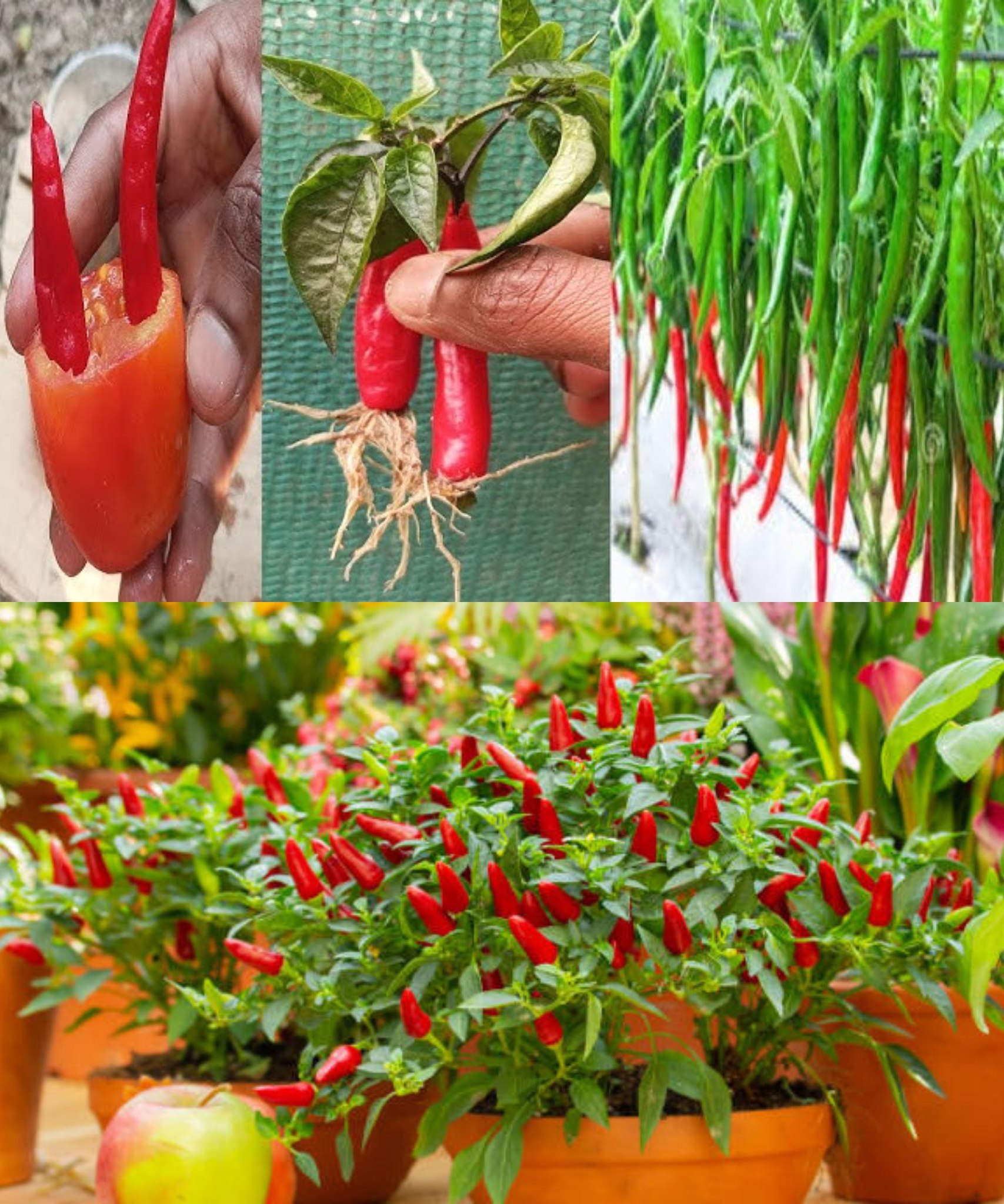
If you’re a fan of adding a zing to your culinary creations and are eager to cultivate your own peppers, growing chilies in plastic containers is an excellent and space-efficient way to do it. Whether you have limited outdoor space or just want to bring the heat closer to home, here are some easy and effective tips to help you successfully grow peppers in plastic containers.
1. Select the Right Container: Begin by choosing a suitable plastic container for your peppers. Opt for containers with drainage holes to ensure proper water drainage and prevent overwatering.
2. Choose the Right Pepper Variety: Select a pepper variety that suits your taste preferences and the growing conditions in your area. From mild bell peppers to fiery jalapeños, there’s a wide range to choose from.
3. Use Quality Potting Mix: Invest in a well-draining potting mix specifically designed for container gardening. This type of soil ensures proper aeration and drainage, promoting healthy root development.
4. Planting Depth: When planting pepper seeds or seedlings, ensure they are placed at the same depth as they were in their original containers. For seeds, plant them about 1/4 to 1/2 inch deep.
5. Adequate Spacing: If planting multiple pepper plants in the same container, provide enough spacing between them. This prevents overcrowding and allows each plant to receive sufficient sunlight and nutrients.
6. Sunlight Requirements: Peppers thrive in sunlight. Place your plastic containers in a sunny location where they receive at least 6 to 8 hours of sunlight daily. If outdoor space is limited, consider a sunny windowsill.
7. Watering: Maintain consistent soil moisture by watering your pepper plants regularly. Allow the top inch of soil to dry out before watering again. Be mindful not to overwater, as peppers are susceptible to root rot.
8. Fertilize Regularly: Container-grown peppers benefit from regular fertilization. Use a balanced, water-soluble fertilizer to provide essential nutrients. Follow the recommended application rates on the fertilizer packaging.
9. Support for Tall Varieties: If you’re growing tall pepper varieties, provide support to prevent the plants from toppling over as they bear fruit. Stakes or cages work well for this purpose.
10. Pruning for Bushier Plants: Encourage bushier pepper plants by pruning the tips when they reach about 6-8 inches in height. This promotes lateral growth and results in a more robust plant.
11. Harvesting: Harvest peppers when they reach the desired size and color. Use clean scissors or pruning shears to cut the peppers from the plant. Regular harvesting encourages continuous fruit production.
12. Container Size Matters: Choose appropriately sized containers based on the mature size of the pepper variety you’re growing. Larger containers provide more room for root development and can support larger plants.
By following these tips, you’ll be well on your way to a successful pepper harvest, even in limited space. Growing chilies in plastic containers is a rewarding and accessible way to enjoy the flavors and heat of homegrown peppers. Happy growing!